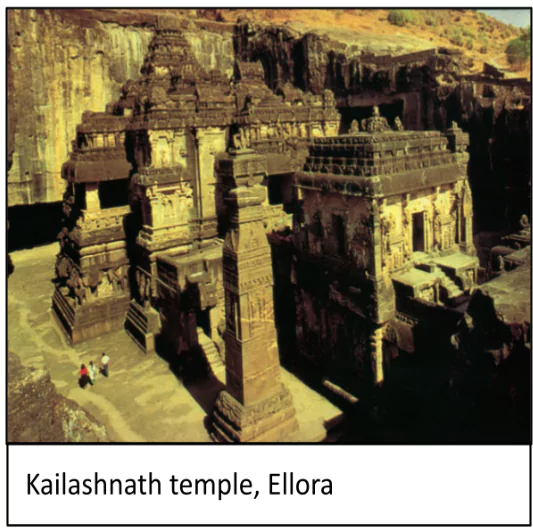Introduction
Rashtrakuta temples, built during the Rashtrakuta dynasty‘s rule (8th-10th centuries), exemplify architectural brilliance in Indian history. They showcase intricate carvings, elaborate sculptures, and grand structural designs.
Important Features of Rashtrakuta temples

- Time Period: In the late seventh or early eighth century, the Rashtrakutas took control of the Deccan, showcasing grand architecture at Ellora.
- Kailashnath Temple: At Ellora, dedicated to Shiva (with a Nandi shrine and a gopuram-like gateway, surrounding cloisters, subsidiary shrines, staircases and an imposing tower or vimana rising to thirty metres), is a complete dravida building carved entirely from living rock.
- The temple was made out of a single rock during the time of Krishna I in the 8th century.
- It is similar to the Lokesvara temple at Pattadakal, in Karnataka, built by Chalukya king Vikramaditya II to commemorate his victory over the Pallavas.
- Carving: One portion of the monolithic hill was carved patiently to build the Kailashnath temple.
- Rashtrakuta sculptures at Ellora display dynamism, grandeur, and overwhelming energy.
Enroll now for UPSC Online Course
Conclusion
- Rashtrakuta temples, with their intricate detailing and architectural finesse, remain iconic symbols of India’s cultural and artistic heritage.
- They stand as enduring marvels, inspiring awe and admiration across generations.
![]() April 18, 2024
April 18, 2024
![]() 2412
2412
![]() 0
0
